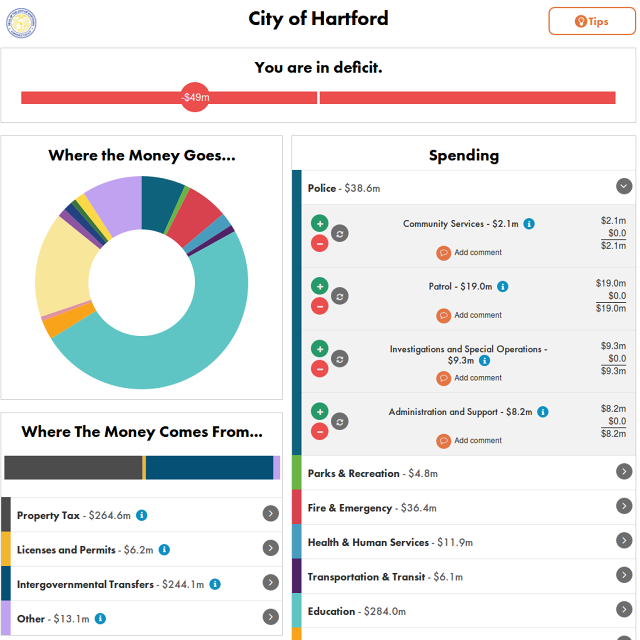Balancing Act is a web app that displays a straightforward pie chart of a city’s budget, broken down into categories like pensions, parks & recreations, police, and education. But it doesn’t just display the current budget breakdown. It invites users to tweak it, expressing their own priorities, all while keeping the city in the black. Do you want your libraries to be better funded? Fine—but you’re going to have to raise property taxes to do it.
“Balancing Act provides a way for people to both understand what public entities are doing and then to weight that against the other possible things that government can do,” says Chris Adams, president of Engaged Public, a Colorado-based consulting firm that develops technology for government and non-profits. “Especially in this era of information, all of us have a responsibility to spend a bit of time understanding how our government is spending money on our behalf.”

Hartford, Connecticut is the first city in the country that is using Balancing Act. The city was facing a $49 million budget deficit this spring, and Mayor Pedro Segarra says he took input from citizens using Balancing Act. Meanwhile, in Engaged Public’s home state, residents can input their income to generate an itemized tax receipt and then tweak the Colorado state budget as they see fit.
Engaged Public hopes that by making budgets more interactive and accessible, more people will take an interest in them.
“Budget information almost universally exists, but it’s not in accessible formats—mostly they’re in PDF files,” says Adams. “So citizens are invited to pour through tens of thousands of pages of PDFs. But that really doesn’t give you a high-level understanding of what’s at stake in a reasonable amount of time.”
If widely used, Balancing Act could be a useful tool for politicians to check the pulse of their constituents. For example, decreasing funding to parks draws a negative public reaction. But if enough people on Balancing Act experimented with the budget, saw the necessity of it, and submitted their recommendations, then an elected might be willing to make a decision that would otherwise seem politically risky….(More)”
